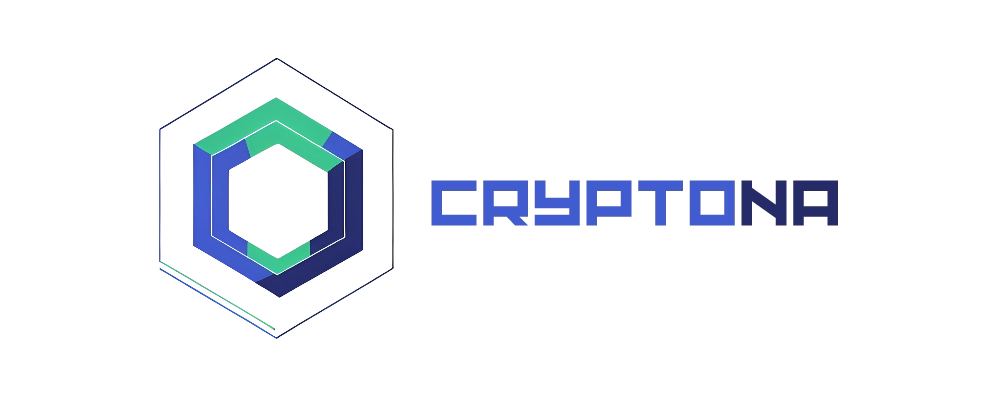Minotaurus (MTAUR) has been running an extended presale campaign since May 2024, raising over $6.4 million while promising investors an “80% discount” and potential 5x returns upon listing. The project presents itself as a blockchain-powered endless runner game similar to Subway Surfers, complete with security audits, an active marketing campaign, and promises of revolutionary gaming utility.
However, a critical examination of the project reveals multiple red flags that align with patterns commonly seen in problematic crypto presales. While not definitively proven to be a scam, the concerning elements warrant extreme caution from potential investors. This analysis examines the structural, operational, and marketing warning signs that suggest Minotaurus may not deliver on its promises.
1. The Anonymous Team Problem: Who’s Really Behind Minotaurus?
The Red Flag
The most glaring concern with Minotaurus is the complete anonymity of its founding team. Despite claiming over “10 years of blockchain experience” and “deep expertise in Web3 marketing,” the project provides no verifiable information about who these people actually are.
The team members are listed with pseudonyms like “Crypto Minotaur” (CEO), “Blockchain Bull” (CTO), and “Crypto Quest Boss” (Marketing Lead) – names that read more like placeholder characters than actual professionals.
Why This Matters
According to industry experts, anonymous teams represent one of the most significant red flags in crypto presales. As one security analysis notes, “when the team behind the project remains anonymous or doesn’t provide verifiable background information, this is a major red flag. Scams and rug pulls are far more likely in crypto projects where the team hides behind anonymity, making accountability difficult if things go wrong.”
Key Questions Unanswered:
- What are the real names of the founders?
- What previous projects have they launched?
- Where are their LinkedIn profiles or professional credentials?
- Can their claimed “10 years of experience” be independently verified?
The Industry Standard
Legitimate crypto projects in 2025 typically feature doxxed teams with:
- Full LinkedIn profiles showing work history
- Verifiable past projects and track records
- Public appearances at conferences or AMAs with video
- GitHub contributions showing actual development work
- Professional credentials that can be independently verified
Minotaurus offers none of these transparency measures. This creates a situation where if the project fails or funds disappear, there is literally no one to hold accountable.
2. Extreme Token Inflation: A Ticking Time Bomb
The Numbers Don’t Add Up
Minotaurus has a total supply of 100 billion tokens – an astronomical figure that immediately raises concerns. The tokenomics breakdown reveals even more troubling details:
Official Token Distribution:
- Presale: 60% (60 billion tokens)
- Ecosystem: 8% (8 billion tokens)
- Liquidity: 10% (10 billion tokens)
- Team: 2% (2 billion tokens)
- Airdrop: 10% (10 billion tokens)
- Marketing: 10% (10 billion tokens)
The Critical Problem
According to analysis, “there’s high token inflation with about 60% of supply unlocking in the first year.” This creates enormous selling pressure immediately after launch. Even with the stated vesting schedules (30% at TGE, then 1-month cliff followed by 8-month linear vesting), the market will be flooded with tokens.
Let’s do the math:
- Initial presale price: $0.00008 (Stage 1)
- Current presale price: ~$0.00010517
- Promised listing price: $0.00020
- Claimed discount: “80% OFF”
If 60 billion tokens were sold at an average of $0.0001, that’s $6 million raised. With 30% unlocking at TGE, that’s 18 billion tokens hitting the market immediately, plus the airdrop allocation (10 billion), ecosystem tokens (8 billion), and marketing tokens (10 billion).
The Dump Risk
Industry research warns that “if too many tokens are unlocked right away or team allocation is too large, the token value can tumble shortly after launch.” With Minotaurus, virtually all non-team allocations could theoretically be unlocked within the first year, creating catastrophic selling pressure.
Even the 2% team allocation is concerning when it represents 2 billion tokens – if the listing price reaches $0.0002, that’s a $400,000 payday for an anonymous team with no accountability.
3. No Product, No Evidence of Development
Where’s the Game?
Despite being in presale for over 18 months (May 2024 – October 2025), Minotaurus has not delivered:
- No playable demo or MVP
- No alpha or beta version
- No gameplay footage beyond promotional materials
- No public GitHub repository with active development
- No Google Play or App Store presence
The Roadmap Promises
The project’s roadmap claims ambitious milestones:
- Phase 4 (supposedly current): MVP Development, Core & Meta Gameplay, Google Play & App Store Release, Alpha Version, Beta Version
Yet none of these promised deliverables appear to exist publicly.
Industry Warning Signs
Experts caution that “if there are no GitHub repositories, development updates, or visuals of the platform in action, this could signal that the project is only at the idea stage, with little progress behind the scenes.”
For a project that has raised over $6.4 million and been running for 18 months, the complete absence of a working product is deeply concerning. Legitimate blockchain games of similar scope typically show:
- Regular development updates with screenshots/videos
- Active GitHub repositories with commits
- Community testing phases with real user feedback
- Transparent progress metrics
Minotaurus offers none of this transparency.
4. Aggressive Marketing Over Substance
The Paid Promotion Machine
A search for Minotaurus content reveals an overwhelming pattern: virtually all coverage appears to be sponsored or promotional. The project has been featured across:
- Dozens of “crypto presale” promotional sites
- Sponsored articles on crypto news platforms
- YouTube reviews that appear paid (disclosed as “sponsored content”)
- Aggressive social media campaigns
The Warning Sign
Security experts note that “if the marketing is louder than the roadmap, you’re looking at a hollow shell. Scams love noise: big promises, celebrity endorsements, and ‘partnerships’ with nonexistent brands.”
What’s Missing:
- Organic community discussions on Reddit or crypto forums
- Independent technical reviews of the smart contract
- Unpaid influencer coverage
- Developer community interest
- Critical analysis from established crypto journalists
The Social Media Facade
While Minotaurus claims “over 19,200 community members,” a closer look at their social media reveals concerning patterns:
- Twitter/X posts often show limited organic engagement relative to follower count
- Telegram groups may be inflated with inactive or bot accounts
- Comments frequently appear promotional or rehearsed rather than authentic
One industry warning states: “If a Telegram group has 30,000 members but no real conversation, you’re looking at a bot farm, not a community. Engagement should feel human, skeptical, and inquisitive – not rehearsed and overly positive.”
5. The “Too Good to Be True” Promises
Unrealistic Claims
Minotaurus markets itself with several promises that should raise immediate skepticism:
- “80% Discount” – This framing is misleading. The actual discount is based on an arbitrary “listing price” that the team has set themselves. There’s no guarantee the market will value MTAUR at $0.0002.
- “Potential 5x Returns” – Again, this is based entirely on the team’s stated listing price, not on any market validation or demand metrics.
- “Top Crypto Presale 2025” – This designation appears only in paid promotional content, not from independent rankings or respected crypto analysis platforms.
- Gaming Market Size Claims – While the project correctly cites that casual gaming is a $14.78 billion market, this doesn’t mean a presale token with no working product deserves any meaningful portion of that valuation.
The Psychological Manipulation
The project employs several high-pressure tactics:
- Limited-time pricing stages that create artificial urgency
- Countdown timers on the website
- Referral bonuses encouraging people to recruit others (pyramid scheme characteristics)
- Vesting bonuses that lock up funds longer
- “Buy now or miss out” messaging throughout all marketing
Industry experts warn: “‘If you don’t buy now, you’ll miss out’ is one of the oldest scams in the book. Urgency marketing is normal, but real projects don’t bully you into decisions.”
6. The Audit Illusion: Security Theater
What the Audits Actually Cover
Minotaurus proudly displays audits from SolidProof and Coinsult, but it’s crucial to understand what these audits actually mean:
What Was Audited:
- The smart contract code for the MTAUR token
- Basic security vulnerabilities in the contract
- Standard ERC-20 compliance
What Was NOT Audited:
- Whether the project will actually deliver a game
- The competence or legitimacy of the team
- The business model’s viability
- The tokenomics sustainability
- Whether the project is a scam
The False Security
Many investors see “Audited by SolidProof and Coinsult” and assume the project is safe. This is a dangerous misconception. An audit only confirms that the smart contract code doesn’t have obvious technical vulnerabilities – it says nothing about whether the project itself is legitimate or will succeed.
As one analyst notes regarding similar projects: “While the smart contract was audited by CertiK and SolidProof, the scope of these audits is limited to that smart contract and does not extend to [the actual product] or its claimed features.”
7. The Valuation Problem: Massively Overpriced
Breaking Down the Numbers
At the current presale price of approximately $0.00010517 and a total supply of 100 billion tokens, Minotaurus is implying a fully diluted valuation (FDV) of:
100,000,000,000 × $0.00010517 = $10,517,000
At the stated listing price of $0.0002: 100,000,000,000 × $0.0002 = $20,000,000
Why This Is Problematic
For context, a presale-stage project with:
- No working product
- No users
- No revenue
- An anonymous team
- 18 months of development with nothing to show
Should NOT command a $20 million valuation. Industry analysis of similar projects concludes: “A more realistic token valuation for a presale-stage project would be in the range of $10-30 million” – but that’s for projects with PROVEN development, doxxed teams, and working prototypes.
Minotaurus has none of these credentials yet expects investors to value it at the high end of that range or beyond.
8. Comparison to Known Red Flags in Failed Presales
Pattern Recognition
Let’s compare Minotaurus to documented characteristics of problematic presales:
| Red Flag | Minotaurus | Industry Standard |
|---|---|---|
| Anonymous team | ✅ Yes | ❌ Should be doxxed |
| No working product after 18 months | ✅ Yes | ❌ Should have MVP |
| Extreme token inflation | ✅ Yes (60% year 1) | ❌ Gradual unlock |
| Paid marketing dominance | ✅ Yes | ❌ Organic growth |
| Unrealistic promises | ✅ Yes (“5x returns”) | ❌ Conservative claims |
| High-pressure tactics | ✅ Yes | ❌ Transparent approach |
| Referral pyramid structure | ✅ Yes (10% bonuses) | ❌ Merit-based growth |
| No GitHub/development proof | ✅ Yes | ❌ Public repos |
| Audit as main credibility | ✅ Yes | ❌ Multiple validators |
Similar Failed Projects
This pattern closely mirrors other presale projects that have been identified as highly problematic:
Bitcoin Hyper showed similar characteristics:
- Anonymous team despite claiming Layer-2 development
- Inflated valuation ($250M+ FDV at presale)
- No MVP or working product
- Audit used as primary credibility marker
- Heavy promotional marketing
Nexchain exhibited comparable red flags:
- Fake team identities with stock photos
- Unverified partnership claims
- Extensive paid marketing with no organic coverage
- GitHub repositories with zero actual development
- Over $5 million raised with nothing built
9. The Giveaway Red Flag
The $100,000 Prize Pool
Minotaurus promotes a “$100,000 giveaway” prominently on their website and marketing materials. While giveaways themselves aren’t necessarily problematic, the structure here raises questions:
How It Works:
- Connect your wallet
- Make a purchase of MTAUR
- Get “extra tickets” for being active
- “Giveaway ends with the presale”
The Concerns
- Purchasing Requirement: Legitimate giveaways don’t require you to buy tokens to participate. This structure encourages more presale purchases rather than rewarding community engagement.
- Vague Timeline: “Giveaway ends with the presale” – but when exactly does the presale end? The end date keeps getting extended (originally July 2025, now indefinite).
- Trust Issue: With an anonymous team and no accountability, how can participants verify that the giveaway will actually be fulfilled or that winners are chosen fairly?
- Marketing Tactic: The $100,000 figure creates an illusion of legitimacy and liquidity, suggesting the project has substantial funds to distribute. However, with $6.4 million raised, dedicating 1.5% to a promotional giveaway is a small price to pay for continued investment.
10. The Extended Presale Timeline: Why So Long?
Unusual Duration
Minotaurus launched its presale in May 2024 and is still ongoing in October 2025 – over 18 months. The presale was originally scheduled to end in July 2025 but has been extended indefinitely.
Why This Matters
Legitimate presales typically last weeks or a few months at most. Extended presales can indicate:
- Difficulty Reaching Goals: The project may not be generating the interest or funding expected
- Moving Goalposts: Continuous extension suggests there’s no actual product launch deadline
- Perpetual Fundraising: The presale itself may be the actual business model, not the game
- Development Problems: If 18 months wasn’t enough to build even an MVP, what does that say about the team’s capabilities?
The Comparison
Similar-scale blockchain games typically show significant progress within 18 months:
- Axie Infinity: Had working game within 12 months
- The Sandbox: Alpha released within 18 months
- Illuvium: Extensive gameplay footage and beta within 2 years
Minotaurus, after the same timeframe, has nothing publicly playable.
11. The Casual Gaming Market Claim: Misleading Context
The Pitch
Minotaurus marketing heavily emphasizes that it’s “targeting the ever-evolving casual gaming market, worth $14.78 billion and projected to expand by nearly 9% annually.”
The Reality Check
While these statistics about the casual gaming market are accurate, they’re completely irrelevant to Minotaurus’s actual prospects. Here’s why:
- Market Size ≠ Your Share: The entire fast food market is worth hundreds of billions, but that doesn’t make every new burger joint a good investment.
- Established Competition: The casual gaming market is dominated by proven titles with millions of users: Candy Crush, Subway Surfers, Temple Run, etc. A token with no game doesn’t compete in this market.
- Blockchain Gaming Reality: The blockchain gaming sector has struggled significantly. Many well-funded projects with actual working games have failed to gain traction because players generally don’t want crypto complexity in casual games.
- False Equivalence: Citing the broader gaming market size to justify a crypto token presale is a classic misdirection tactic seen in many problematic projects.
12. What Legitimate Projects Do Differently
For Contrast: Signs of Credible Blockchain Gaming Projects
To understand what Minotaurus is missing, let’s examine what legitimate blockchain gaming projects typically demonstrate:
1. Transparent Leadership
- Doxxed team with LinkedIn profiles
- Regular video AMAs showing real people
- Attendance at industry conferences
- Verifiable track records
2. Working Product
- Playable demo or MVP available early
- Regular development updates with screenshots/videos
- Public beta testing with real user feedback
- Active GitHub with visible progress
3. Realistic Tokenomics
- Gradual unlock schedules (3-5 years)
- Small team allocations (5-15%)
- Locked liquidity for extended periods
- Clear utility beyond speculation
4. Organic Growth
- Active Reddit discussions (not just promotion)
- Independent YouTube coverage
- Developer community interest
- Critical analysis alongside positive coverage
5. Conservative Marketing
- Emphasis on product over promises
- Acknowledgment of risks
- No guaranteed return claims
- Focus on long-term vision
6. Community Engagement
- Open development process
- Regular town halls with Q&A
- Transparent roadmap updates
- Honest communication about delays/challenges
Minotaurus demonstrates virtually none of these characteristics.
13. The BNB Chain Context
Why BSC?
Minotaurus is built on Binance Smart Chain (BSC), marketed as providing “fast transactions and low fees, enhancing gaming efficiency.”
The Full Picture
While BSC is a legitimate blockchain, it’s also notorious for being the home of numerous scam tokens and rug pulls due to:
- Low deployment costs (making it easy for scammers)
- Less stringent verification than Ethereum mainnet
- A history of problematic projects
According to crypto security research, BSC consistently ranks among the top chains for scam activity. While this doesn’t make every BSC project a scam, it’s relevant context when combined with other red flags.
Legitimate gaming projects often choose Ethereum L2s (Arbitrum, Optimism), Polygon, or dedicated gaming chains (Immutable X, Ronin) for better infrastructure and ecosystem support.
14. The Referral Program: Pyramid Scheme Characteristics
How It Works
Minotaurus offers up to 10% referral bonuses in USDT for both the referrer and referee when someone makes their first MTAUR purchase through a referral link.
The Concern
While referral programs aren’t inherently problematic, the structure here raises questions:
- Emphasis Over Product: The referral program is promoted almost as prominently as the game itself, suggesting recruitment is a core business model.
- USDT Payments: Why are referral bonuses paid in USDT rather than MTAUR? This could indicate the team doesn’t believe in the long-term value of their own token.
- Pyramid Dynamics: The more people you recruit who buy, the more you earn – regardless of whether the game ever launches or succeeds. This incentivizes misleading people to invest.
- Where Does the Money Come From? If the project is paying out significant referral bonuses in USDT, that’s money coming from the presale funds that’s supposed to go toward development.
Industry Warning: Projects that emphasize recruitment and rewards for bringing in new investors over product development often exhibit pyramid scheme characteristics, even if they’re technically legal.
15. Expert Opinions and Industry Analysis
What Security Researchers Say
When examining the broader patterns that Minotaurus exhibits, security researchers have identified several critical warning signs:
On Anonymous Teams: “Anonymous team members might simply disappear if an issue arises with the crypto project. Cryptocurrency investors should be cautious if the founders or developers don’t disclose their identities or if their claimed experience cannot be easily verified.”
On Extended Presales: “Presale stages can present exciting investment opportunities, but they also come with significant risks. Many projects use crypto presales as an early fundraising method, but not all are as legitimate as they may appear.”
On Marketing vs. Development: “Crypto presales tend to depend heavily on aggressive promotion and flashy campaigns for marketing. They also use social media influencers, paid advertisements, and celebrity endorsements to create a sense of urgency or hype.”
On Tokenomics: “Pick projects with strong tokenomics, such as capped maximum supply, real-world utility, and deflationary mechanisms like token burns. Prioritize projects that solve real problems.”
Community Sentiment
While there are no verified scam accusations from major platforms, the absence of organic community discussion is itself telling. Legitimate projects generate:
- Active Reddit threads with critical discussion
- Independent Medium articles analyzing the project
- GitHub stars and forks from interested developers
- Technical deep-dives from crypto researchers
Minotaurus has virtually none of this organic interest despite 18 months of operation and millions raised.
16. The “But They Have Audits!” Counter-Argument
Addressing the Common Defense
Many Minotaurus supporters point to the SolidProof and Coinsult audits as proof of legitimacy. Let’s address this directly:
What Audits Actually Prove:
- The smart contract code compiles and runs
- There are no obvious technical vulnerabilities like reentrancy attacks
- Basic ERC-20 standard compliance
- The contract does what it claims at a code level
What Audits DON’T Prove:
- The team is legitimate or will deliver a product
- The tokenomics are sustainable
- The project has real development happening
- Investors will make money
- The game will ever launch
- The team won’t abandon the project
Failed Projects with Audits
Numerous documented scams and failed projects had clean audits:
- BitConnect (audited, still collapsed)
- SafeMoon (audited, lost 99% of value)
- Countless BSC tokens (audited, rug pulled)
An audit is a necessary but not sufficient condition for legitimacy. It’s the bare minimum, not a seal of approval for investment.
17. Financial Risk Assessment
What Could Go Wrong
Let’s outline the realistic scenarios for MTAUR investors:
Best Case Scenario (Low Probability):
- Game actually launches with decent gameplay
- Generates organic user interest
- Token maintains or grows from listing price
- Team delivers on promises
- Investors see positive returns
Most Likely Scenario:
- Game launches in limited/buggy form or not at all
- Token lists below presale price due to oversupply
- Early sellers dump immediately at any price
- Project gradually fades into obscurity
- Investors lose 50-90% of investment
Worst Case Scenario:
- No game ever launches
- Team disappears after final token distribution
- Liquidity pools are drained
- Token becomes worthless
- Total loss of investment
Risk Factors Summary
HIGH RISK:
- Anonymous team (no accountability)
- No working product after 18 months
- Extreme token unlock schedule
- Overvalued for development stage
MEDIUM RISK:
- Heavy reliance on paid marketing
- Extended presale timeline
- Pyramid-like referral structure
- BSC deployment platform
LOWER RISK (But Still Concerning):
- Smart contract audits complete
- Some level of community activity
- Responsive Telegram admins
- Professional website design
Overall Assessment: This project exhibits multiple high and medium risk factors that, when combined, create an investment profile that most experienced crypto investors would avoid.
18. The Opportunity Cost
What You’re Missing
Beyond the risk of losing your investment in Minotaurus, there’s the opportunity cost to consider. The $6.4 million invested in MTAUR could have been allocated to:
Established Projects:
- Bitcoin or Ethereum (proven store of value)
- Blue-chip DeFi protocols with working products
- Established gaming tokens with actual users
Legitimate Presales:
- Projects with doxxed teams and working prototypes
- Ventures with VC backing and due diligence
- Startups with realistic valuations and timelines
Traditional Investments:
- Index funds (average 10% annual returns)
- Treasury bonds (risk-free returns)
- Revenue-generating businesses
The question isn’t just “Will MTAUR fail?” but “Even if it doesn’t fail, are there better uses for this capital?”
19. Red Flags Checklist: Score Your Investment
Let’s apply a standardized red flag checklist to Minotaurus:
Critical Red Flags (Deal Breakers)
- ✅ Anonymous team
- ✅ No working product after extended development
- ✅ Unrealistic return promises
- ✅ Heavy paid marketing with no organic growth
Major Red Flags (Serious Concerns)
- ✅ Extreme token inflation (60% year 1 unlock)
- ✅ Extended presale timeline with no product
- ✅ Pyramid-like referral structure
- ✅ Overvaluation for development stage
- ✅ Missing development evidence (GitHub, demos)
Moderate Red Flags (Warning Signs)
- ✅ High-pressure marketing tactics
- ✅ Vague team credentials
- ✅ Giveaways requiring token purchase
- ✅ Continuously extended timelines
- ✅ BSC deployment (scam-prone chain)
Positive Factors (Mitigating Elements)
- ✅ Smart contract audits from known firms
- ✅ Active social media presence
- ✅ Professional website and branding
- ✅ Responsive community management
Score: 13/16 Red Flags Present
This is an exceptionally high red flag score. For context, security researchers suggest avoiding any project with 3+ critical red flags or 7+ total red flags.
Conclusion: The Verdict
Summary of Findings
Minotaurus (MTAUR) exhibits a concerning combination of characteristics commonly associated with high-risk or fraudulent crypto presales:
- Complete team anonymity with no accountability or verifiable credentials
- No working product despite 18 months of development and $6.4M raised
- Extreme token inflation that will create immediate selling pressure
- Misleading marketing with “80% discount” and “5x return” claims
- Paid promotional dominance with virtually no organic community interest
- Overvalued relative to its stage of development
- Extended presale timeline with continuously moving goalposts
- Pyramid-like referral structure emphasizing recruitment over product
- Pattern matching with documented failed and fraudulent projects
Is It Definitively a Scam?
We cannot state with certainty that Minotaurus is a deliberate scam. It’s possible (though increasingly unlikely) that:
- An inexperienced team is struggling to deliver
- Development is happening privately without public updates
- The game will eventually launch in some form
- The team genuinely believes in their vision
However…
The evidence strongly suggests that Minotaurus, at best, is a poorly executed project with unrealistic promises and incompetent leadership. At worst, it follows the classic pattern of a sophisticated crypto scam designed to extract maximum funds from retail investors before delivering minimal or no value.
The Professional Recommendation
DO NOT INVEST in Minotaurus unless:
- The team fully doxes themselves with verifiable credentials
- A working MVP is publicly released and independently reviewed
- The tokenomics are restructured to prevent immediate dumping
- Independent (unpaid) technical analysis validates the project
- The presale timeline is clearly defined with accountability measures
Until these conditions are met, Minotaurus represents an unacceptable risk profile that violates basic due diligence standards for crypto investment.
For Current Investors
If you’ve already purchased MTAUR:
- Do not invest more – don’t fall for sunk cost fallacy
- Monitor carefully – set alerts for TGE and listing dates
- Plan your exit – be prepared to sell immediately if token lists
- Learn from this – use this as a case study in identifying red flags
- Share your experience – help others avoid similar situations
Final Thoughts
The cryptocurrency space offers genuine innovation and investment opportunities. Projects like Ethereum, legitimate DeFi protocols, and well-executed blockchain games have created real value and changed industries.
Minotaurus does not appear to be one of these projects.
The combination of anonymity, lack of product, aggressive marketing, and problematic tokenomics creates a risk profile that no informed investor should accept. The absence of any single red flag might be explainable, but the accumulation of so many concerning factors points to a project that is, at minimum, highly problematic and unlikely to deliver returns.
In the world of crypto investing, protecting your capital is more important than chasing promised gains. When a project exhibits this many warning signs, the prudent decision is to walk away, regardless of how compelling the marketing materials appear.
Additional Resources
How to Research Crypto Projects Properly
- Team Verification
- Search team members on LinkedIn
- Google their names + “crypto” or “blockchain”
- Check if they’ve spoken at conferences
- Verify GitHub contributions
- Product Validation
- Download and test any available demos
- Review GitHub repositories for activity
- Check for independent technical reviews
- Search for gameplay videos from non-promotional sources
- Community Assessment
- Read Reddit threads (not just official subreddit)
- Join Telegram/Discord and ask critical questions
- Look for red flags like deleted criticism
- Gauge whether discussions feel organic
- Financial Analysis
- Calculate realistic FDV based on comparable projects
- Model token unlock schedule and selling pressure
- Assess whether tokenomics are sustainable
- Consider opportunity cost vs. alternatives
- Red Flag Monitoring
- Use checklists like the one in this article
- Compare against documented scam patterns
- Trust your gut when something feels off
- Remember: FOMO is not a valid investment thesis
Where to Get Help
- r/CryptoCurrency – Large community that discusses new projects
- CoinMarketCap/CoinGecko – Check community sentiment and comments
- Crypto Twitter – Follow security researchers and analysts
- Rugpull.fi – Database of documented scams and failed projects
- CertiK/Skynet – Security alerts and project monitoring
Disclaimer: This article represents analysis and opinion based on publicly available information. It is not financial advice. Always conduct your own research and never invest more than you can afford to lose. The author has no financial interest in Minotaurus or competing projects.






















Leave a Reply